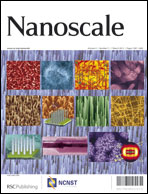The stability and surface evolution of solid-state nanopores in aqueous solutions are extremely important since they would get immersed in solutions during DNA translocation experiment for DNA analyses. In this work, we systematically studied the size evolution of SiN nanopores in ethanol, deionized water and potassium chloride (KCl) solutions by careful surface characterization and composition analyses using a transmission electron microscope. Surprisingly, we found that nanopores closed up completely in ethanol in an hour and showed a 30% and 20% size decrease in deionized water and KCl solutions, respectively. Strong evidence of surface oxidation was found by composition analyses in the nanopore area. Nanopore size evolution was strongly dependent on initial pore size and solution pH value. In pH = 13 KCl solution, SiN nanopores were observed to increase in size instead of decrease. The results not only provide useful information for DNA detection based on solid-state nanopores, but can also guide design and application of other nanodevices exposed to electrolyte-solvent systems such as cell-on-a-chip devices and biosensors.

You have access to this article
 Please wait while we load your content...
Something went wrong. Try again?
Please wait while we load your content...
Something went wrong. Try again?


 Please wait while we load your content...
Please wait while we load your content...